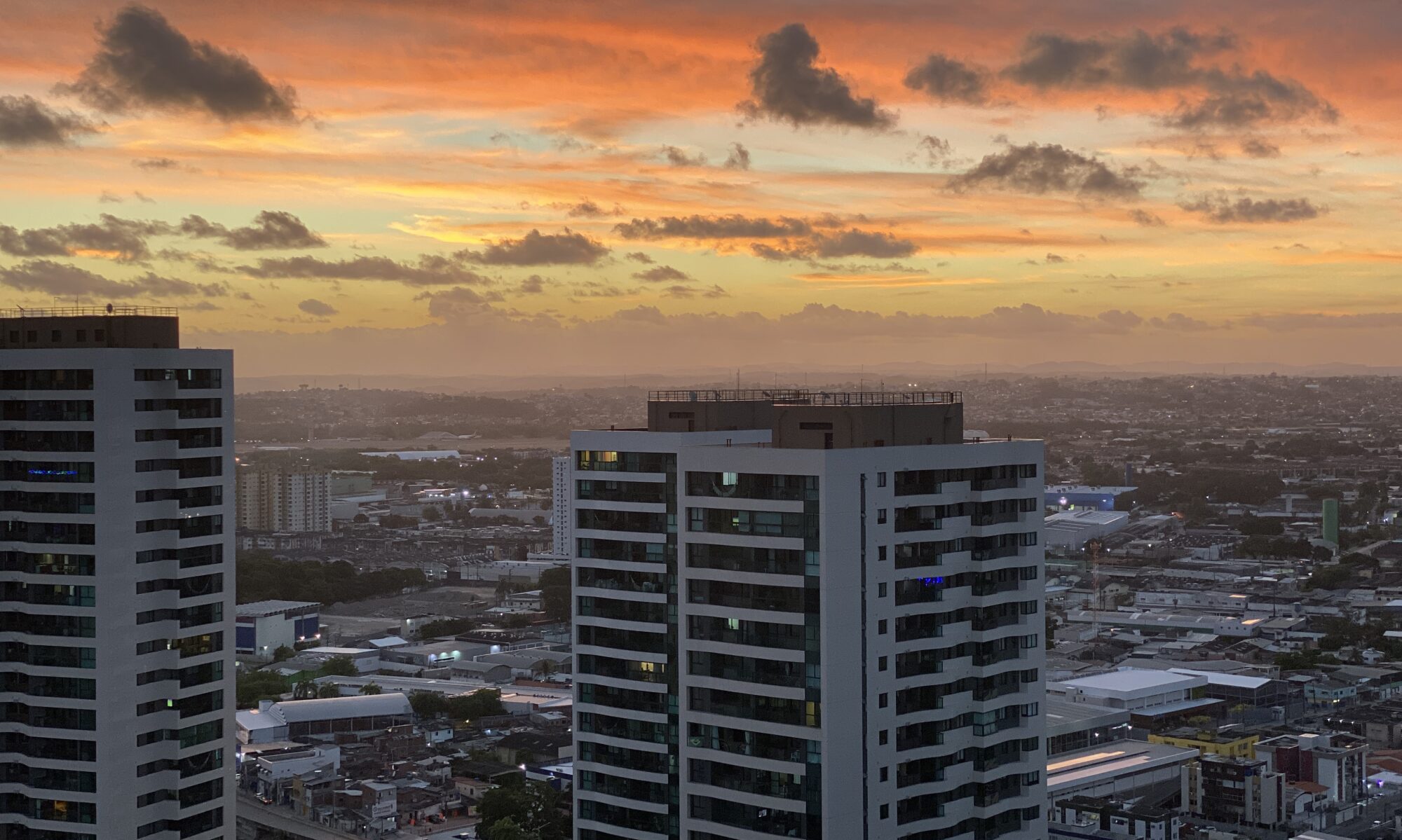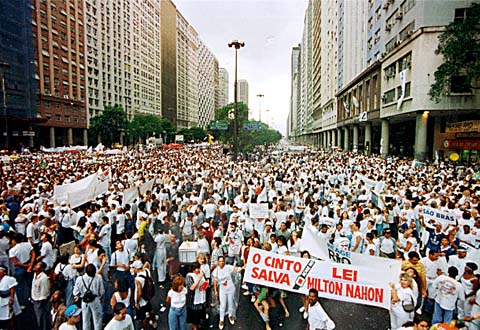Discovered by Portugal in 1500, Brazil remained a colony for 322 years, having proclaimed its independence in 1822. Contrary to what happened in the rest of Latin America, it conserved the Monarchy as its form of government. In 1889 the Republic was proclaimed, and a constitutional model similar to the United States was established. An important difference, which remains to this day, was that the re-election of presidents, governors and mayors was not admitted for consecutive terms of office. The unitarian State that had prevailed during the Monarchy (1822 – 1889) was transformed into a Federation, and the old provinces (now denominated states) began to exercise a decisive influence.
Having a higher economic and population weight, the states of São Paulo and Minas Gerais formed the main political axle of the First Republic (1889 – 1930). With the inexistence, in this initial period, of political parties of a national level, the pluralism remained atrophied, and the majority of states’ politics came under the control of a unique group (the so-called “Republican” parties). This structure would radically change with the 1930 Revolution, by means of which Getúlio Vargas assumed the control of the Provisional Government (1930 – 1937), followed by the constitutional presidency (1934 – 1937), and finally, the implantation of the dictatorship known as “Estado Novo” (New State; 1937 – 1945).
The “Getulista” (Getúlio’s) period has strongly (re) centralised the power at national level, with the consequent enlargement and modernization of the civil bureaucracy and the Armed Forces. Despite having culminated in a dictatorial regime, the 1930 Revolution was initially inclined towards important reforms for the future development of democracy, such as the Electoral Code of 1932, the creation of the Electoral Justice and the extension of voting rights to women. In that period, an important impulse was also given to the country’s industrialization, via the import substitution. The end of the Second World War and the consequent discredit of right wing dictatorships had internal reflections, allowing for the growth of the opposition against “Estado Novo” and taking the military to demand Getúlio Vargas’ exit, which occurred in October 1945. Free presidential elections immediately followed. The National Congress took responsibility for elaborating a new Constitution.
The period between 1945 – 1964 registered important advances in terms of democracy, which expressed itself through a multi-party system and a proportional electoral system. The unions multiplied and began to exercise a significant influence in the country’s life, despite the legal limitations resulting from the corporatism established under the “Estado Novo”. It was, however, a politically unstable period: the presidents Eurico Dutra (1945 – 1950) and Juscelino Kubitscheck (1955 – 1960) completed their terms of office normally, but Getúlio Vargas (1950 – 1954) committed suicide in face of a serious political-military crisis, and Jânio Quadros resigned in August 1961, having served for only seven months. There was also the deposing of two vice-presidents: in November 1955, of Café Filho, who had assumed the presidency in 1954, following Getúlio Vargas death; and in March 1964, of João Goulart, who had succeeded Jânio Quadros in 1961. João Goulart’s fall initiated a 21-year period when the government would be directly controlled by the military.
The Brazilian Military Regime (1964 – 1985) has distinguished itself from other traditional Latin-American dictatorships for a variety of relevant aspects. Amongst them is the fact that a complete rupture with the pre-existing constitutional form had not taken place. In order to avoid a personalization of power, the military presidents were confined to fixed mandates, with no right to re-election. Although the decisive influence in their choice came from the Armed Forces High Command, it had to be formally ratified by an Electoral College.
The parties from the pre-1964 period were extinguished in 1965, and replaced by two others, consented by the military regime: the National Renovator Alliance (Arena) to support the government, and the Brazilian Democratic Movement (MDB), gathering the different opposition currents. During the entire military period, there were reasonably competitive elections for the Legislative, at the three levels (federal, state and municipal), and for the municipal governments. However, stronger restrictions were imposed to the choice of the states’ governments, mayors of capitals and some municipalities considered relevant to national security.
The Brazilian re-democratization, formally resumed in 1985, may be described as a process of “opening through elections” (abertura através de eleições). Since the 1974 legislative elections, the MDB (opposition) had the support of a significant portion of the electorate, as shown in the graphic. In 1979 the government promoted a party reform, re-establishing the multi-party system. However, the opposition’s division into various acronyms did not alter the already configurated tendency in the 1970’s elections: an inviable “diarchy”, represented on one side by the military control of the presidency, and on the other side by the growing opposition’s presence in municipal and state governments, in the legislative, the press and the majority of non-government organizations relevant to the regime’s legitimization. The final stage of this transitional process was the election of Tancredo Neves, a moderate oppositionist leader, for the Republic’s Presidency.
Chosen by the Electoral College in January 1985, Tancredo Neves was hospitalised on the 14th of March, of the same year, the day before the prescribed date when he was to assume the Presidency. He would die 36 days later, and his vice-president and interim successor was confirmed as the constitutional president.
Still in the first semester of 1985, the National Congress revoked the restrictions of ideological character, which had existed since the Second World War, to the formation and parliamentary functioning of political parties considered extremist (in practice, the communist parties). A Constituent Congress was elected in November 1986, and a new Constitution promulgated on the 5th of October 1988. In November 1989, the first direct presidential elections for 29 years took place. The second round of the election was fought by Fernando Collor de Mello and Luís Inácio Lula da Silva, widely recognised as the most important union leader in Brazilian history. Fernando Collor de Mello was elected but, accused of corruption, was removed from the government by the constitutional process of impeachment, in September 1992, and the post assumed by vice-president Itamar Franco.
In April 1993 a plebiscite on the form (Republic or Monarchy) and the system (presidential or parliamentary) of government was called. The majority of the electorate voted for maintaining the republic and the presidency. The 1994 presidential elections were decided already in the first round, with the victory of Fernando Henrique Cardoso, a sociologist and senator who was supported by a coalition of social democrats (PSDB) and liberals (PFL), over Luís Inácio Lula da Silva, supported by PT (the Workers’ Party) and the other left wing parties.


